Check out these four gorgeous NOLA restaurant destinations.
Compère Lapin
The inspiration for the name Compère Lapin (“brother rabbit”) comes from Chef/Owner Nina Compton’s childhood in St. Lucia, where she read traditional Caribbean folktales featuring the mischievous namesake rabbit.
Drawing on the stories' themes of exploration and play, the restaurant — which opened in June 2015 in the Old No. 77 Hotel — features a whimsical design coupled with historic charm. Influenced by the building’s history as a warehouse serving the Port of New Orleans, James Beard Award finalist Parts and Labor Design retained the original warehouse architecture while adding elements of classic French decor and a modern, bohemian flair.
The 86-seat, indoor-outdoor eatery has a relaxed atmosphere that combines materials and textures ranging from warm caramel leathers and honey oaks to tan tweeds, cool bohemian blues and English greens.
Original floor-to-ceiling wood-and-glass French doors along Tchoupitoulas Street open to an outdoor seating area, illuminating the space with natural light. An impressive 80-foot cocktail/raw bar provides open views into the kitchen, where guests can take in the action. Walnut and brass blown-glass light fixtures complete the look.
“The rabbit is everywhere; it’s stenciled with bitters on one of our cocktails, and we have our logo on the original wood planks that are over 100 years old,” says Compton, who was recently named a finalist for the 2017 James Beard Awards, Best Chef: South. “It is one of the most popular backdrops on Instagram. We have many rabbit figurines that were given to us from guests, and each has its own name.”
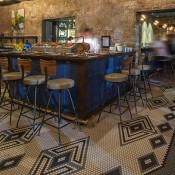
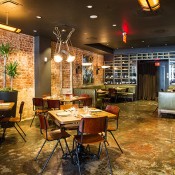
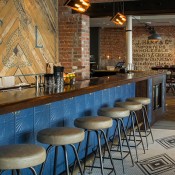
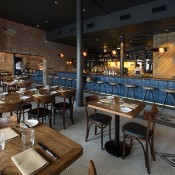
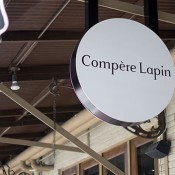
Photos courtesy of Compère Lapin
Seaworthy
Set in a Creole cottage built in 1832, Seaworthy is a partnership between Ace Hotel and the trio behind New York’s award-winning Grand Banks: New Orleans natives Alex and Miles Pincus and nightlife impresario Adrien Gallo.
Designed by Ace Hotel’s in-house team, hOmE Studios and Grand Banks, the oyster and cocktail bar pulls inspiration from the Pincus brothers’ sailing trips along the Gulf Coast waterways as well as from the city’s many galley bars from the 19th century where Gulf fishermen would tell stories over grog and Meriton Latroon’s Bantam Punch.
With 88 seats indoors and 42 on the courtyard patio, the roughly 3,200-square-foot restaurant features custom brass pendant lights and cracked, crumbling walls decorated with a mix of vintage paintings and pictures that add to the maritime aesthetic.
Seating is an eclectic mix of blue tufted leather booths; midcentury chairs; and wood, marble and alabaster tables. Bentwood speaker boxes, weathered mirrors, zinc bar panels, a slate oyster display and a dramatic steel-and-glass back bar further set the scene.
Nationally acclaimed Executive Chef Kerry Heffernan and Chef de Cuisine Daniel Causgrove showcase wild-caught and sustainably harvested seafood from American coastal waters. Award-winning bar director Lauren Schell presents celebrated craft cocktails and proprietary session drinks meant for day drinking, especially during Sunday crawfish boils.
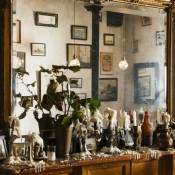


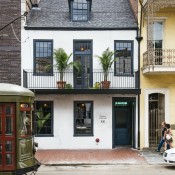
Photos by Rush Jagoe
Trinity
In May 2016, Chef Michael Isolani and developer Hugh Uhalt gave Maximo’s in the lower French Quarter a $1 million makeover into Trinity, which has quickly become one of the city’s most celebrated restaurants.
The multilevel indoor/outdoor restaurant covers 6,000 square feet and seats more than 100 guests. Designed by William Sonner Designs, Trinity features sleek, contemporary elements combined with old-world features, exuding an aura that is both sophisticated and comfortable.
Upon entering, guests are greeted by an expansive marble bar with dramatic ambient lighting set against a backdrop of exposed brick. A wraparound food bar seating 17 and elevated leather and marble banquettes overlook the open kitchen, allowing guests to watch chefs as they create a variety of New Orleans-inspired dishes like crawfish and fontina beignets with tarragon aioli, frog leg tempura with cilantro ponzu sauce, and foie gras torchon with blood sausage.
Upstairs, a private dining room with outdoor seating on a candlelit balcony overlooks the horse-drawn carriages and historic New Orleans architecture of Lower Decatur Street.
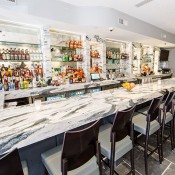

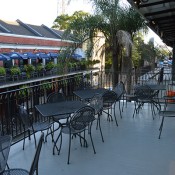
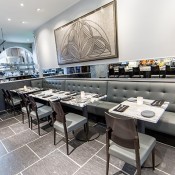
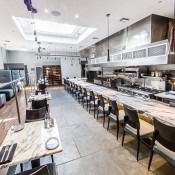
Photos courtesy of Trinity
DTB
At the recently opened DTB (which stands for Down the Bayou), Designer Valerie Legras and Architect Brooks Graham sought to bring the old Louisiana coastal country to New Orleans’ Carrolton neighborhood by combining rustic and natural elements with a modern, polished decor.
Legras spent time down the bayou with Chef/Owner Carl Schaubhut, gathering inspiration and elements to bring to the restaurant’s interior, including burned cypress, white oak, steel wheels and Spanish moss. Upon entering, guests are greeted by an array of gold-lacquered fish heads protruding from the wall, inspired by the fish found in the beaks of egrets along the bayou.
Ahead, a corrugated rusted tin bar seating 10, offset with a white quartz countertop, mother-of-pearl oyster shell backdrop and floating white shelves, houses everything from reserved bourbons to vintage Dixie beer cans (all still full and all donated by Schaubhut’s father).
Two communal white oak tables offer the perfect place to perch and socialize, while in the main dining area, quartz and metal tables with deep green alligator-skin upholstered banquettes are backed by burned cypress panels. A sleek stainless-steel open kitchen allows diners to take in the action.
In the kitchen, Schaubhut delivers modern interpretations of Southern Louisiana’s coastal cuisine, recreating the region’s antiquated dishes with refined technique and a lighter, more creative twist in the form of dishes like crawfish fry bread with green chile fonduta, mushroom boudin balls and Cacio e Pepe, a Cajun play on the Italian classic with house-made cayenne spaghetti tossed in crab-fat butter and garnished with trout roe. Cocktails are created by award-winning libations maven Lu Brow.

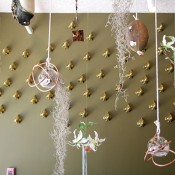

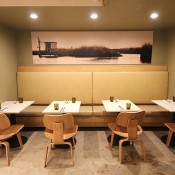
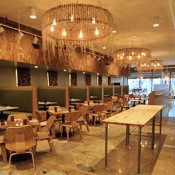
Photos courtesy of DTB



















